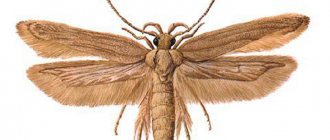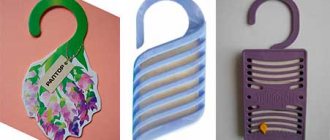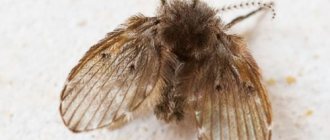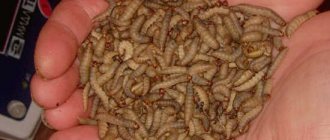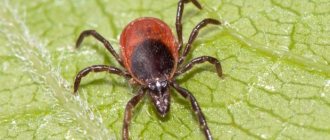At first, food moths seem to many to be a fairly harmless insect, but time passes and everything becomes obvious. Therefore, every housewife has to think at some point about how to get rid of food moths in the kitchen. The very first thought that comes to mind is to purchase a special preparation for killing flying insects.
And most often in the store, eyes are directed to where there is a canister that looks like dichlorvos. However, those of us who have had to deal with this insect can immediately declare that no other drug can compare with mothballs in terms of effectiveness. But still, I don’t want to immediately resort to chemistry, since it is unsafe for human health . In addition, it can harm products.
Where do moths come from in an apartment?
It is generally accepted that moths most often start from careless housewives. However, there are exceptions.
Even if you keep your kitchen perfectly clean, sometimes this is not enough to avoid encountering this harmful insect. This can happen when you next come home from the store with bulk products or candies, in which food moths may already be hiding. And if several individuals get into your kitchen, then be prepared for the fact that a whole colony of these unpleasant insects will soon appear in your kitchen.
It's not without reason that the larvae are found in food - they need food. In search of food, they are able to chew through even cellophane bags . Although, as practice shows, food moths mainly live in dusty and dirty places. Therefore, if you do not want to start fighting these insects ahead of time, then you need to regularly carry out general cleaning in the kitchen.
Types of food moths and features of their morphology
If you look at photos of different types of food moths, you may be surprised how they are generally confused and combined under one name. For example, in the photo below there is a flour moth, one of the most common types of food moths in an apartment:
And then the photo shows the mill moth, less flashy and more rare in residential buildings:
And here is the southern barn moth, which has a beautiful pattern on its wings. Getting it out is often the hardest thing to do:
And in the photo below you can see what the cocoa moth looks like - a common food moth, which can easily be confused with a clothes moth due to the inconspicuous light yellow color of the wings:
But in general, any food moth looks inconspicuous, even despite the pattern on the wings of some of its species. All of them are butterflies of discreet colors and small sizes.
Usually the length of their wings does not exceed 7-8 mm, and when sitting on the surface, the insect folds them and becomes like a small protrusion on the surface. It is not surprising that the simple glance of a city apartment resident is usually not able to discern the difference in the color of these butterflies.
On a note
For an unprepared resident of a big city, food moths and clothing moths are very similar. The easiest way to distinguish them is by their meeting places - clothing moths rarely catch your eye in the kitchen, while food moths, on the contrary, do not favor wardrobes and bedrooms with their attention.
But the larvae of food moths all look the same. These are small (up to one and a half centimeters) white-yellow or white-pink caterpillars without any hair or outgrowths on the body. It is usually impossible to determine whether a caterpillar belongs to a particular moth by its appearance. Fortunately, they can all be hatched using the same methods, and it is not necessary to determine the species of the larvae for this.
For example, in the photo below is a larva of the meal moth:
And in the next picture is a cocoa moth larva. Even despite the obvious differences in the color of adult butterflies, their larvae are very similar:
On a note
Food moth larvae lead a secretive and sedentary lifestyle. They are usually encountered either in contaminated products or when crawling out of cabinets to pupate. In this case, they move along the walls and greatly attract attention. The photo shows an adult food moth larva ready to pupate.
It is also useful to read: Choosing a product to combat moths at home
What is the danger?
Humans have developed a dislike for food moths due to the fact that these unattractive-looking butterflies cause nothing but irritation. And if we add to this the ability to instantly multiply in various bulk products, then they quickly turn into man’s worst enemy. A person can find this insect in products that form the basis of his diet - salads, chocolate, dried fruits, cereals, tea, etc. What irritates the moth most of all is that it can appear within two or three days after purchasing fresh products.
Knowing that these insects live in the kitchen, the housewife needs to be especially attentive to the dishes : if moths have been there, which can be a carrier of bacteria, then she will have to wash all cups and plates every time before eating. Naturally, this will bring joy to few people, because you will have to spend additional time and effort on this operation. Having such a neighbor in her kitchen, the hostess will have to forget about inviting guests into the house. Therefore, moth in the house is a source of many problems, so you need to start fighting it as early as possible.
Harm from food moths
The main harm of food moths is food spoilage. Moth-infested groceries are no longer edible, and in industrial warehouses, contaminated food is unsuitable for sale.
It is also useful to read: How to reliably protect a mink coat from moths
If there is a serious infestation in a warehouse, food moths are dangerous due to large losses of the product and a strong decrease in its quality.
On a note
It is moth-infested and secondary purified products that enter the market at bargain prices - after all, they need to be sold somehow. And by buying them, an ordinary city resident risks bringing a pest into his home with them.
Food moths do not eat clothes and are not dangerous to the wardrobe. This, however, does not mean that if there are food moths in the room, you should not worry about things: clothes moths and food moths do not interfere with each other and can easily coexist in the same apartment, while mainly food moths will be seen. In any case, you need to remove the moth from the first signs of its detection in the house.
What grandmother's remedies should you give up?
Food moths also caused a lot of inconvenience to our grandmothers. In order to get rid of it, they used a number of well-proven means:
- naphthalene;
- tobacco;
- shag.
Perhaps in those distant times they were a very effective remedy against moths, but today you need to think carefully before using them. A common feature of all of the above products is the presence of very pungent odors that can permeate everything around. Therefore, if you decide to fight insects with these products, you will make your home even dirtier.
Surely not all housewives know that moth larvae and eggs cannot withstand direct sunlight. Therefore, if you have suspicions that there are insects in cereals or other products, then for the purpose of prevention it would not hurt to place them on the balcony or on the windowsill of an open window.
Prevention is our main weapon
As you know, it is always better to be safe than to lose all your products.
To combat pests in our kitchen that encroach on family supplies, and prevent their occurrence, it is necessary:
- store all products in special, preferably glass containers with a tight-fitting lid in a dry place;
- every month review the containers in which food is stored;
- if a small infection is detected, the flour should be sifted through a sieve, and the cereal should be sorted and dried in the oven at a temperature of 60-70 degrees;
- in case of severe contamination, the products are not suitable for food and should be thrown away;
- wash kitchen cabinets for storing food regularly with soap and soda solution;
- in winter, you can periodically take food out onto the balcony, since a temperature of -2 degrees kills pests.
Advice. How to get rid of moths in a kitchen cabinet? For preventative purposes, you can lay out sheets of paper on the shelves of the cabinet with a mixture of equal parts of borax, crushed millet and powdered sugar sprinkled on it.
What should you take into account?
Soap
In fact, there is no need to consult special literature to find out what the most effective methods for killing moths are. Our ancestors also used laundry soap to remove moths from their homes, the smell of which is not tolerated by this pest. To protect food, of course, you will have to find something else, but these fragrant bars are ideal for things in chests of drawers and cabinets.
Citrus peels
Peelings of citrus fruits - lemons, oranges and tangerines, which can be used to remove food moths from an apartment, have proven themselves to be effective. The crusts should be laid out in places where food moths are most likely to appear - wardrobes and in the kitchen .
But you need to keep in mind that citrus peels need to be changed regularly, as their smell weakens over time. You also need to take into account that orange peels can only scare away adults. If they managed to lay eggs, then orange peels will not help you protect your food and belongings.
Lavender
Another popular remedy that our ancestors used to fight food moths is perforated bags of lavender. If you don’t have this herb in your home, you can use it instead:
- mint;
- tansy;
- cloves;
- thyme;
- rosemary;
- ginseng root;
- horse chestnut seed, etc.
These drugs should be treated in the same way as with citrus peels - they are periodically replaced with new ones , since they tend to fizzle out and lose their former effectiveness.
Lavender oil has the same effect as a lavender sachet placed in gauze. But you should be very careful with these food moth repellents, as their smell can permeate the food, and then you are unlikely to want to use them for cooking.
Vinegar/garlic
If you have food moths, you don’t have to worry about how to get rid of them. To remove it from your apartment, affordable products such as garlic and vinegar will help you. The first is laid out in eggs and cabinets where moths can settle. A weak solution is made from vinegar, which is used when cleaning premises. But you must not forget that after such treatment this place will emit a characteristic odor.
Keep in mind that using any of the above methods will not kill the moth. They are intended solely to scare her away . The set of measures described is preventive in nature and is designed to protect your home from the appearance of such a harmful insect.
Temperature
Experienced housewives often use the following technique, which helps them quickly and easily get rid of food moths in the kitchen. It is necessary from time to time to expose foods in which this insect may be found to frost or heat. Practice has proven that adults, as well as eggs and larvae, cannot withstand low temperatures of -10 ° C, nor high temperatures of + 30 ° C.
I would like to immediately mention that after moths appear in cereals and other products, you will very soon find them in things stored in closets and chests of drawers .
Here you need to know the following: when females lay eggs, the eggs are very loosely attached to the fabric, and therefore the clothes that we regularly use are not damaged by moths. Thus, you need to be very careful about those things that you wear only on holidays - they need to be shaken and aired from time to time. Then you can be sure that moths will not harm you either in the kitchen or anywhere else.
How to get rid of moths in the kitchen: safe means of control
If you do not want to harm your health, then you should use a food moth trap. It has a very simple design, so you can easily make it yourself: take an ordinary strip of cardboard and apply a layer of sticky glue on it with pheromones from female moths , which butterflies release in preparation for mating. Sometimes in stores you can find special baits in which the pheromone component is not contained in the glue, but in a separate bag. Therefore, already in the process of preparing a moth trap, you will need to apply it to the sticky part.
However, be careful with this remedy. You should not make more than two traps for the kitchen. Otherwise, the air will be so heavily saturated with pheromones that moths will not fly up to them, and then your whole idea will lose all meaning.
Most often, male individuals flock to a moth trap; as a result, after death, the reproductive cycle of insects stops, and this makes it possible to limit the area of distribution of insects.
Thus, if you find food moths in the kitchen, then you need to get rid of it not only in this room, but throughout the entire apartment. For the best effect, it is recommended to use all available methods:
- carry out general cleaning regularly;
- lay out bags of lavender;
- make preventive trap strips.
Such an integrated approach will certainly help you very quickly remove this insect from your apartment.
Summary
Food moths are a real problem. Humanity has been fighting it for many years, but success in this fight is variable.
Take proactive preventative measures and it will bypass you. And we have also attached a thematic video on this issue, in which you will find a lot of useful information.
Little bugs in the kitchen - see here.
Did you like the article? Subscribe to our Yandex.Zen channel
Great article 0

